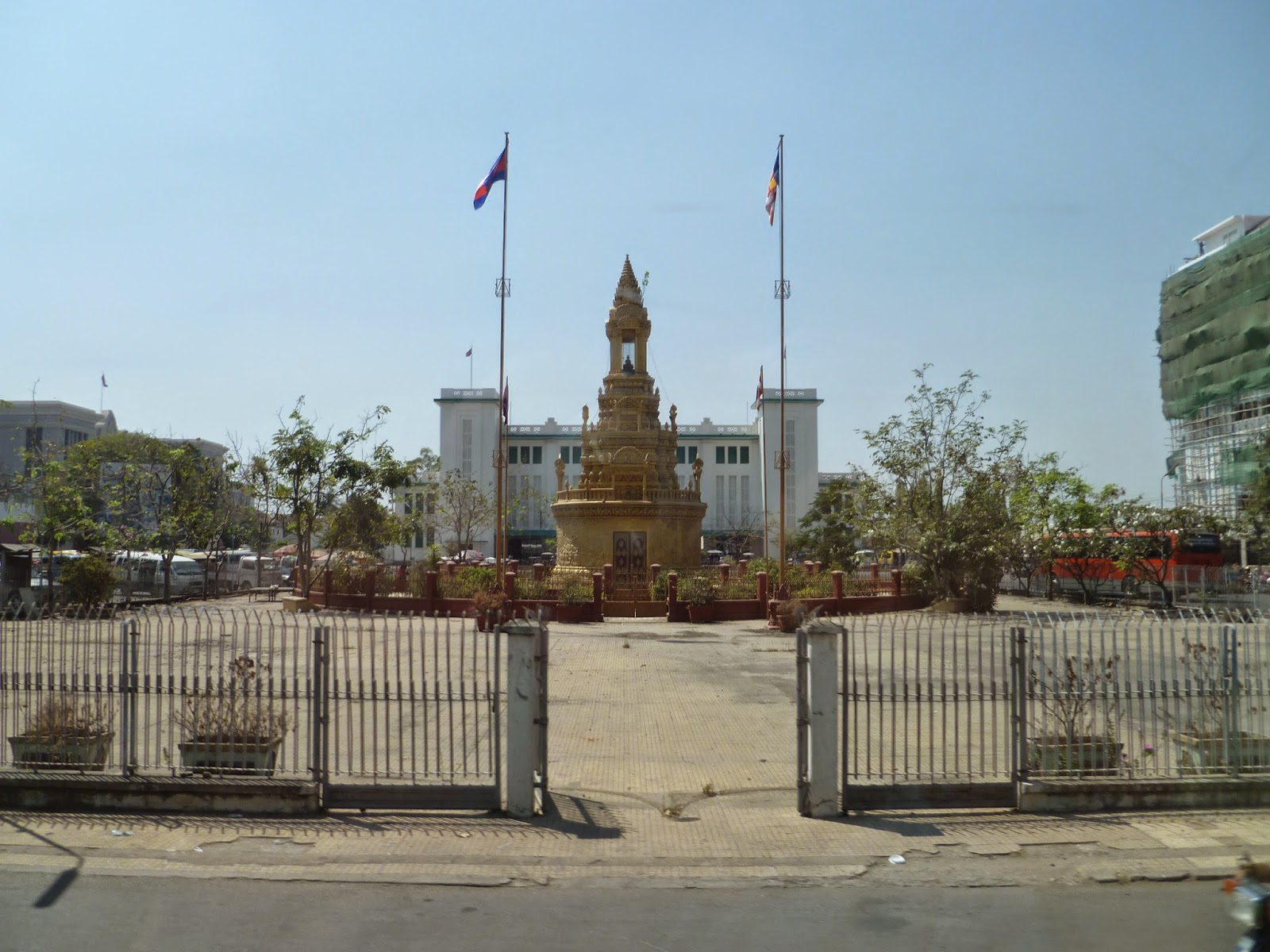 The Tonlé Sap is the largest freshwater lake in Southeast Asia.
The Tonlé Sap is the largest freshwater lake in Southeast Asia. 
It's also home to the largest and poorest Vietnamese community in this country.
The Tonlé sap was shrunk dramatically this dry season when we visited.

However, when the year's heavy rains begin in the next couple of months, it would back up to form an enormous lake, at least 10 to 15 times than the current volume of water.

We could see clearly the marking of the high water season on the banks. It was like 30-50 feet higher than the current level.
 The Lake is also an important commercial resource, providing more than
half of the fish consumed in Cambodia. In harmony with the specialized
ecosystems, the human occupations at the edges of the lake is similarly
distinctive - floating villages, towering stilted houses, huge fish
traps, and an economy and way of life deeply intertwined with the lake,
the fish, the wildlife and the cycles of rising and falling waters.
The Lake is also an important commercial resource, providing more than
half of the fish consumed in Cambodia. In harmony with the specialized
ecosystems, the human occupations at the edges of the lake is similarly
distinctive - floating villages, towering stilted houses, huge fish
traps, and an economy and way of life deeply intertwined with the lake,
the fish, the wildlife and the cycles of rising and falling waters.
We rented one of the huge tour boats offered here for around 20 US dollars. Coincidentally, it was operated by a Vietnamese family. So they promised to offer us to visit and to see the lives of the Vietnamese community on boats.
The local tour guide warned us about allowing the boat take us to these communities, the Khmer, The Muslim and the Vietnamese. To the contrary, we specifically asked them to take us there to his disdain.

We heard about it but we wanted to learn first hand on how our fellow Vietnamese people whom were being forced to live away from their own country during and after the war, struggle to survive here.

The boat trip through these floating villages took approximately 3 hours. We stopped by to talk to many different Vietnamese floating households, their floating markets, fisheries, clinics, schools, pigsty and other boatloads of tourists.



It is tough to live and survive here. There are school for children, but the majority of them have to quit school and to help their parents to make a living. There isn't many choice of what kind of jobs one wants to do here. Fishing and working as day laborer are their only choices. Some children are as young as 7 or 8 years old, working fiercely to compete for a couple dollars a day.
The saddest part is the poorer they are, the more babies a couple would make here. A typical young mother under 25 years of age at home were always to be surrounded by many of her children, and their ages different one can tell is no more than 2 years apart.
All the children seem to be under nourished and malnutrition. In many households, the parents were gone working somewhere else, and the older children had to take care of the younger ones alone, many of which were no older than 10 years of age themselves.
We brought a lot of dry food for donation, but not enough. It'd never been enough anyways. In exchange for this short coming, monetary was gladly substitute.
On the way back, it broke my heart when a young boy about 10-11 years old approached me and tried to sell me sex boldly with his broken English. It must have been rampaged here with many pedophiles from all over the world to come and take advantage of this situation.
I fell into an isolation filled with sadness about this issue on the way back to our hotel.




























































